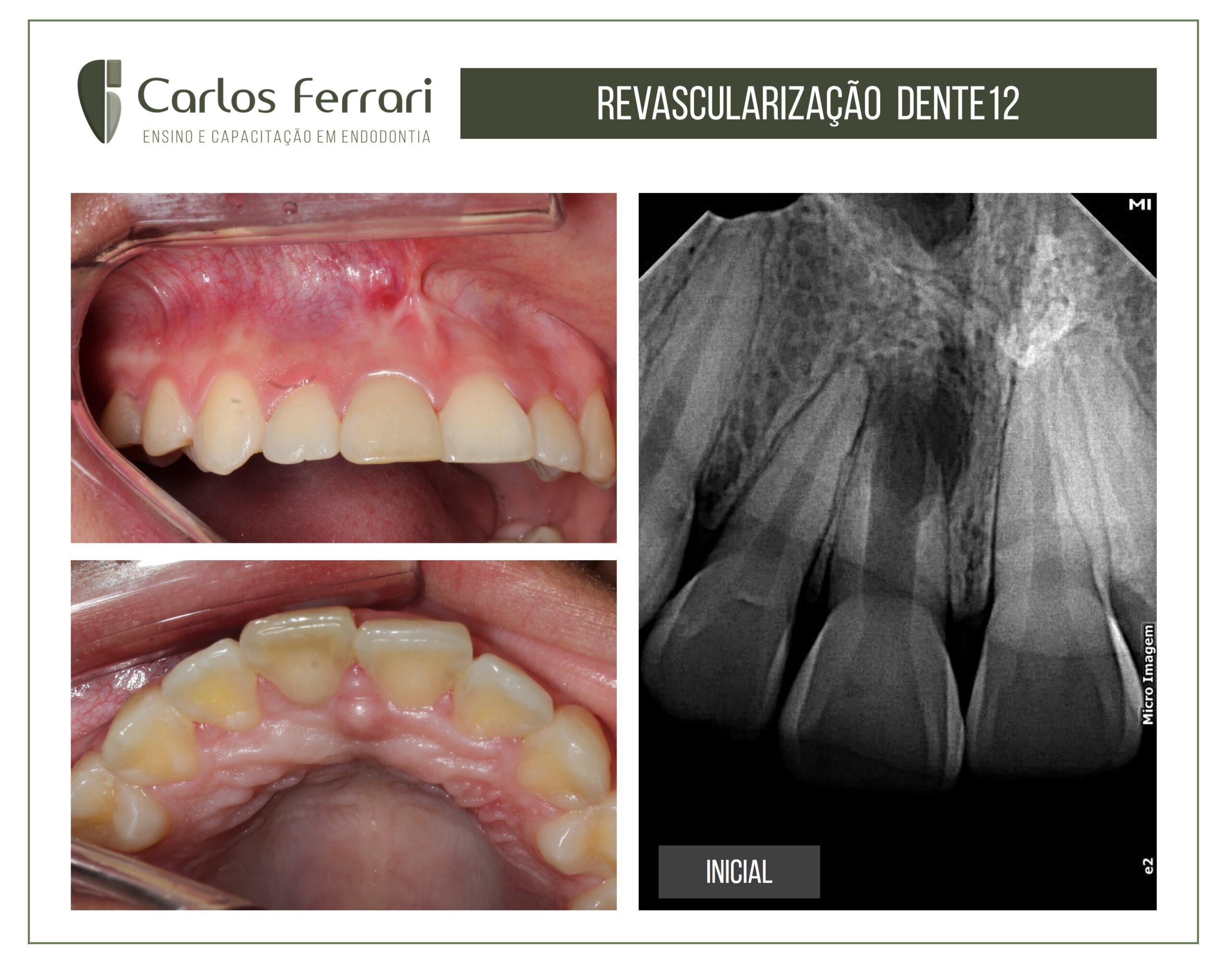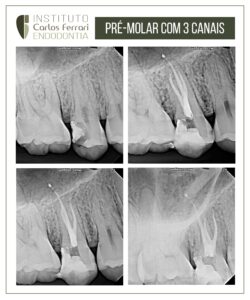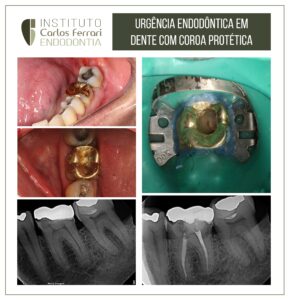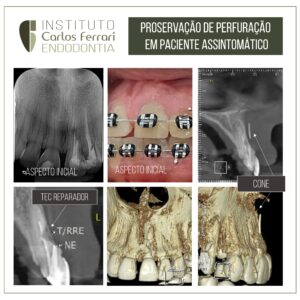Revascularização. Caso em paciente adulto.
Caso de revascularização em dente com abscesso apical crônico em dente com rizogênese incompleta em paciente adulto. Paciente 18 anos, sexo feminino, procurou atendimento devido à indicação de colega, para tratamento endodôntico do dente 11. Histórico de trauma aos 6 anos. Relatou ausência de sintomas e no exame clínico, observou-se leve edema na região gengival apical. No exame radiográfico, presença de imagem radiolúcida periapical difusa e dente com formação radicular incompleta, em estágio de Nolla compatível com 7 a 8. Optou-se pela revascularização.
Foi realizado preparo e descontaminação com hipoclorito de sódio 2,5% e protocolo final com agitação com Easy Clean e colocada medicação com hidróxido de cálcio por 30 dias. Na segunda sessão, a MIC foi removida com soro e EDTA e agitação e realizada então a indução o coágulo e o seu recobrimento com MTA e selamento.
Caso conduzido pelo aluno Marcelo Buregio da turma VI, especialização em endodontia da HPG Brasília.
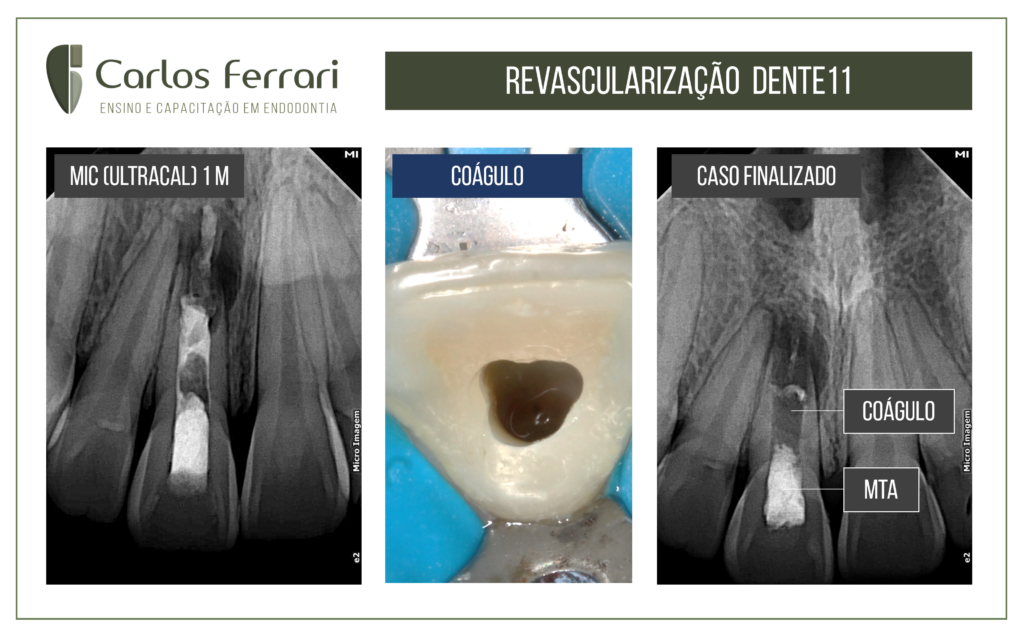
In: Revascularização pulpar em dentes permanentes necrosados com rizogênese incompleta Leticia Rodrigues SOUSA, Anny Gabrielle Silva PEREIRA, Izabela Pastor DA SILVA, Janielle Emanuelle Resende DE SANTANA, Laerte Oliveira BARRETO NETO Rev. odontol. UNESP, vol.50, nEspecial, p.0, 2021 Introdução:
A formação completa da raiz dentária ocorre em um período de até três anos após a erupção do dente permanente. Dentes imaturos que sofrem algum tipo de trauma podem ter seu desenvolvimento radicular interrompido, resultando em um processo denominado rizogênese incompleta. Nesses casos, o tratamento endodôntico é um desafio. As dificuldades encontradas são: a pouca idade dos pacientes, paredes dentinárias frágeis e ápice em desenvolvimento dificultando a obturação do sistema de canais radiculares. Nesse contexto, a regeneração pulpar passa a ser uma alternativa que promove a formação de um novo tecido dentinário no interior do canal radicular.
Objetivo: Revisar a literatura sobre evidências cientificas existentes quanto a revascularização pulpar em dentes permanentes necrosados. Materiais e métodos: O presente estudo trata- se de uma revisão de literatura, em que foram consultadas as bases de dados do LILACS e Medline/Pubmed, utilizando como descritores “Polpa Dentária” “Coagulação Sanguínea” “Endodontia”, e foram selecionados artigos e dissertações em inglês e português. Resultados: A técnica da revascularização consiste inicialmente na limpeza e desinfecção do conduto radicular, já que o processo só é efetivo quando o canal estiver totalmente livre de infecção.
O segundo passo é induzir a formação de um coagulo sanguíneo que irá preencher o canal radicular. As células sanguíneas irão induzir a formação de um tecido revascularizado por meio do fornecimento de fatores de crescimento para as células-tronco da papila, desencadeando um acúmulo de células indiferenciadas que formarão novos tecidos, aumentando assim a espessura do canal, alongamento da raiz, fechamento do ápice e devolução da vitalidade. Conclusão: O tempo de tratamento da técnica é mais curto, podendo ser finalizada em uma ou duas sessões, sendo o custo benefício um fator favorável. A maior vantagem é a indução ao término do desenvolvimento da raiz com espessamento e, como resultado, o fortalecimento das paredes radiculares.


